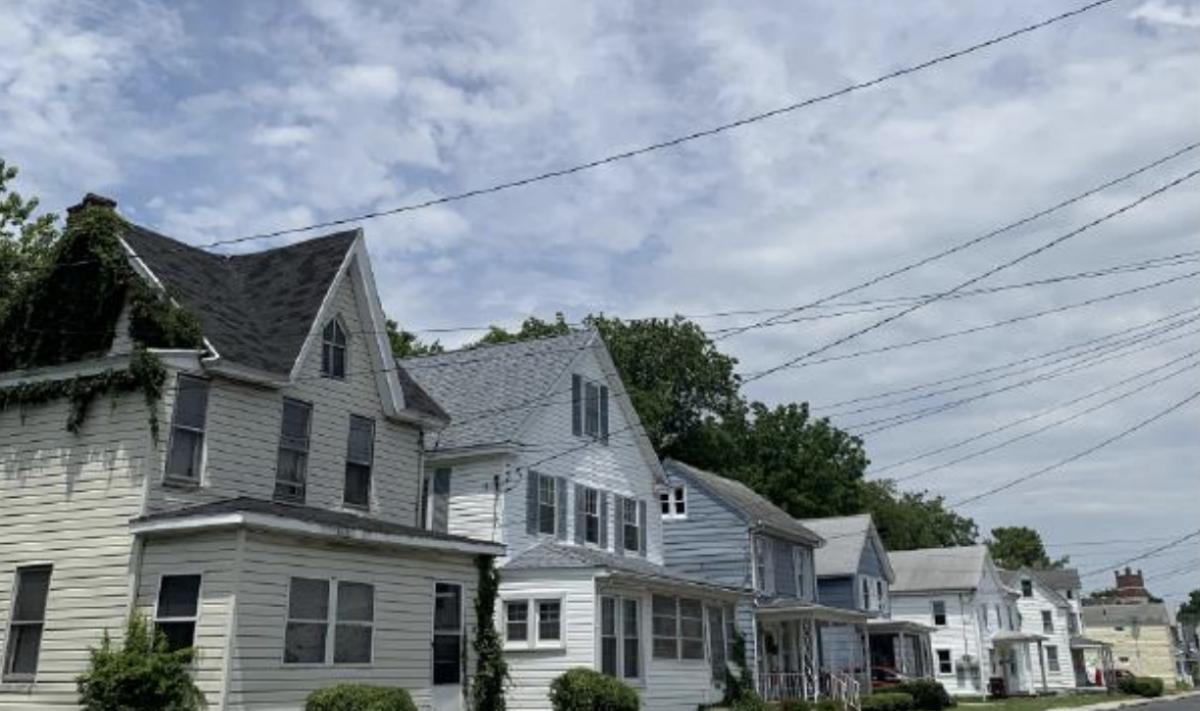At an October 2022 meeting with residents of Pine Street in Cambridge about possible development in the area, someone said to City Manager Tom Carroll, “We’ve been talking about this for fifty years. When are we gonna do stuff?”
“That resonated with me,” Carroll reflected, “because, as I look at Pine Street, there are some beautiful structures and beautiful homes, but there’s still a lot of blight and there’s still a lot of need. We’ve got a long way to go, in partnership with the community and the residents of the neighborhood and the property owners.”
It wasn’t always this way. When Cambridge prospered as a factory town in the first half of the 20th century, Pine Street—one of the oldest continuously occupied African American neighborhoods in Maryland—prospered, as well. During the 1930s, busy black-owned businesses lined the streets, and the music scene at several local nightclubs was the most vibrant on the Eastern Shore.
But too many people relied on Phillips Packing for their livelihood, and the company’s downfall in the fifties caused African American unemployment to skyrocket. This led to civil unrest, and a fire in the summer of 1967 wiped out much of Pine Street. Things were never the same after that.
Still, Carroll thinks a lot of what’s currently happening in the area is positive. Habitat for Humanity is building eleven homes on Wells Street, and renovations near completion on Cornish Park at 701 Douglas Street. Recently, ground was broken for the Pine Street Community Market, which is scheduled to open in August.
Perhaps most significantly, the city will be applying on March 14 for a $4 million federal grant from the Department of Housing and Urban Development. If this is successful, Cambridge will spend the next two years investing a considerable amount of money in the Pine Street Historic Neighborhood District, possibly as much as twenty to thirty thousand dollars on each home that participates in the program. The investment would go to such things as lead abatement, plumbing repair, heating, weatherization, and hygiene. Owner-occupied homes as well as rentals would be eligible.
Another aspect of this project would involve job creation. Lead abatement is a trade that requires certification, and the city government would hire and train people from the Pine Street area for the job. They would then have a career with a living wage, since a lot of homes on the Eastern Shore need lead abatement. Additionally, the city would bring on several local individuals for community outreach and grant management.
“We’re building capacity and employing people directly from the neighborhood to make the neighborhood better,” explained Carroll. “So, we’re very optimistic about this grant, and that’s kind of my lead focus right now.”
He will learn this summer if Cambridge is to get the grant. In the meantime, the city is partnering with the state to pay for the acquisition of the old Club Dujour & Eatery on Chesapeake Court, which is right across the street from where they want to build ten to twelve single-family homes through a project called HOW (Home Ownership Works). The club is seen as an impediment to the housing endeavor.
“You wouldn’t want to buy a single-family home right next to a club that has hundreds of people going there on a summer Friday or Saturday night,” said Carroll. “So, it’s a project where we feel like buying the bar, eliminating that from the neighborhood, is an improvement to the neighborhood because it strengthens the single-family homes there.”
While housing is the major focus now, there is also the prospect of bringing new minority-owned businesses to Pine Street. Carroll is optimistic, but he says, “The challenge is that there’s not a turnkey-ready piece of property where somebody could just move in and open a coffee shop or a bar or a barbershop. Some of the property that would be suitable for commercial would need a significant investment today.”
Toward that end, Cambridge is involved in a “land bank,” which is where the city acquires specific property and holds on to it until such time that it can partner with neighborhood businesses that would revitalize the area.
“Pine Street is in need of significant investment and work, let’s agree on that,” said Carroll. “But that’s the rewarding work. The opportunity for the city and the neighborhood to come together and do something in partnership that’s restorative, that’s healing, that creates economic opportunity for the people who live there, who deserve it, that’s what I’m excited about.”






Write a Letter to the Editor on this Article
We encourage readers to offer their point of view on this article by submitting the following form. Editing is sometimes necessary and is done at the discretion of the editorial staff.